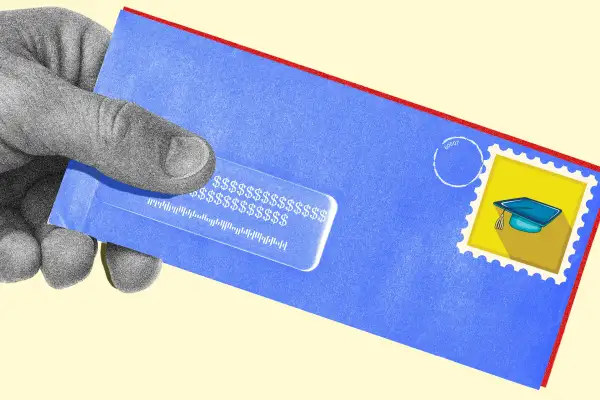FAFSA Update: What to Do if You're Still Waiting for a College Financial Aid Letter

In a typical year, the start of May would mark the end of the college application process, with most incoming freshmen knowing where they were going in the fall.
This year, though, has been anything but ordinary.
Families across the country are still waiting on financial aid letters from at least some of the colleges where they applied, even as May 1 — traditionally used by many colleges as a deadline for students to notify them of their plans to enroll — comes and goes.
Families were supposed to have an easier time applying for college financial aid this year, thanks to a major revamp of the Free Application for Federal Student Aid (FAFSA) that resulted in a shorter, simpler form. But the rollout of the new form has been plagued with issues, including a late launch, long delays before colleges received applicant information from the government and data problems that required the Department of Education to reprocess many students’ forms.
Without the aid packages that detail the kinds of grants, scholarships and loans a student qualifies for, families have been stuck: They know where they've been accepted, but they don’t know how much they’d actually have to pay to attend.
When will financial aid letters go out?
Many colleges still working to calculate financial aid offers have told admitted students to be on the lookout for award packages anywhere from now to mid-May.
As of last week, 44% of colleges said they had not started preparing financial aid letters, according to a survey from the National Association of Student Financial Aid Administrators. Ten percent of colleges said they expected to send letters to families by the end of April, while 46% reported they'd already sent out letters.
At the University of Illinois at Urbana-Champaign, all admitted students who have a complete FAFSA on file have now received financial letters, Michelle Trame, director of student financial aid, says in an email. The university began sending financial aid letters on April 19. Other large public universities, including Arizona State University and Georgia State University, are aiming to send out letters in early May, according their websites.
Public colleges are far less likely than private colleges to have sent out financial aid letters, per last week's NASFAA survey. Over 40% of four-year public colleges reported not being able to start packaging awards, compared to just 14% of private colleges.
That’s in part because a few hundred private colleges require the CSS Profile, a secondary financial aid application, along with the FAFSA. Those schools started receiving financial information from families back in the fall, and many were able to use that to determine grants and scholarships on a relatively normal timeline.
But size plays a factor, too. At Lebanon Valley College in Pennsylvania, a private school that does not use the CSS Profile, the financial aid office was able to work around the FAFSA delays to offer students estimated awards starting in mid-February. The college, which expects to enroll up to 500 freshmen for the fall, looked at how it spent scholarship money by income ranges over the past several years to give families an idea of what they'd qualify for.
“That way families could at least get started with something,” says Chris Hanlon, director of financial aid. “I think families appreciated just having someone talk to them.”
After the college received FAFSA information from the government, it sent out official award offers, which Hanlon says seemed to align closely with its estimates.
Adelphi University, a private college on Long Island, New York, has sent financial aid awards to just over 60% of the admitted first-year students with complete FAFSAs on file, says Kristen Capezza, vice president of enrollment management and university communications. Every admitted student at Adelphi receives some kind of merit scholarship from the university, ranging from $10,000 to north of $33,000.
The awards that haven’t been packaged yet require a student or parent to make a correction on their application, she says. This is yet another federal holdup: Families weren’t able to make changes to their submitted FAFSAs, including fixing a missing signature, adding to the list of colleges that receive your information or correcting a mistake, until the week of April 15. (Typically, students have that capability within a few days of submitting the form.)
So far, the university has been “hyper-focused on the new first-year students,” Capezza says. Next, the financial aid office intends to work on financial aid applications from incoming transfer students and new graduate students.
What to do if you’re still waiting on financial aid letters
If you’re still waiting on financial aid letters from one or more colleges, the first thing you should do is check whether you need to submit additional information or fix anything on your application. This capability wasn’t available to students until recently, so almost every college had a backlog of forms they couldn’t process until students made updates.
To see if your FAFSA falls in that category, log into your account at studentaid.gov. Under the “My Activity” page, look for any required actions. (The Education Department has a step-by-step guide to making changes or FAFSA corrections.)
If your application doesn’t have any outstanding issues, then the college(s) you’re waiting to hear from is likely still working through the award-packaging process.
Because of the Education Department's repeated processing delays, most colleges have either proactively pushed back their May 1 deposit deadline or offered some other kind of flexibility. The University of Illinois, for example, is giving admitted students until May 15. Arizona State University, which announced last week that students should receive financial aid letters by mid-May, is keeping its May 1 deposit deadline but says applicants can request a refund until May 31 if they put down a deposit and later decide to enroll elsewhere.
With deadlines “all over the map,” families are confused about what to do. In the worst-case scenario, students may have one college with a deadline that falls before they've received financial aid awards from other schools, says Shannon Vasconcelos, senior director of college finance at Bright Horizons College Coach, an advising arm of the company that provides childcare.
"Students are feeling pressured to make uninformed decisions, and those decisions could be costly," she says, adding that many students will probably be tempted to put deposits down at more than one college and then forfeit that money. "The stress for families and for colleges is going to continue through the summer."
How to get more time for college decisions
Despite the chaotic timeline, students should not feel rushed to make a decision without taking time to understand and compare all their financial aid offers. Be sure you’re checking your email and application pages so you understand each individual college’s policy. And if you haven't already, get in touch with any schools that have approaching deadlines to let them know you'll need more time.
Capezza, at Adelphi University, says it’s “completely fair” for anyone waiting on more information to ask for a deadline extension.
“Any college that doesn’t grant them more time is likely not the best fit,” she says.
That said, she recommends setting your own internal cutoff for when you’ll make a decision about where to enroll. That way you can start preparing for what's next, and you won't run the risk of being late to sign up for on-campus housing or the first round of class registration.
More from Money:
Student Loan Debt Has Forced Over 70% of Borrowers to Delay Major Life Events
3 Ways College Financial Aid Letters Can Confuse Families — and What to Do About It







